From Thutmose III, Amenhotep III, and Akhenaten, to Tutankhamun, Egyptian pharaohs were the rulers of ancient Egypt who held supreme power and authority over the land and its people.
The pharaohs were believed to be divine beings who served as a link between the gods and the people. They played a significant role in shaping the political, economic, and cultural landscape of ancient Egypt and oversaw the construction of massive monuments such as the Pyramids of Giza and the magnificent temples.
There are perhaps no other ancient kings that fascinate us more than those who once ruled over ancient Egypt. Tales of the ancient Egyptian pharaohs, the grand monuments they built and the military campaigns that they waged continue to capture our imagination to this day. So, who were the pharaohs of ancient Egypt?
Table of Contents
Who Were the Pharaohs of Egypt?

The Egyptian pharaohs were the rulers of ancient Egypt. They held absolute power over the country and its people. These kings were considered to be living gods by the people of ancient Egypt.
The ancient Egyptian pharaohs were not only kings who ruled over Egypt, but they were also the religious leaders of the land. The early Egyptian rulers were called kings but later became known as pharaohs.
The word pharaoh comes from the Greek form for the Egyptian term Pero and means ‘Great House,’ referencing the impressive structures used as the pharaoh’s royal palace.
It was not until the period of the New Kingdom that the ancient Egyptian kings used the title of pharaoh. Before the New Kingdom, the Egyptian pharaoh was addressed as your majesty.
As both a religious leader and head of state, an Egyptian pharaoh held two titles. The first was the ‘Lord of Two Lands’ which refers to their rule over Upper and Lower Egypt.
The pharaoh owned all of the lands in Egypt and made the laws that ancient Egyptians had to adhere to. The pharaoh collected taxes and decided when Egypt went to war, and which territories to conquer.
Pharaohs and The Division Of Egyptian History
The history of ancient Egypt is divided into several periods which are defined by significant political, cultural, and social changes. The three main periods of Egyptian history are the Old Kingdom which began in roughly 2700 BCE, the Middle Kingdom which began in roughly 2050 BCE and the New Kingdom, beginning in 1150 BCE.
These periods were characterized by the rise and fall of powerful dynasties of ancient Egyptian pharaohs. The periods that make the history of ancient Egypt can then be further divided into pharaonic dynasties. There are roughly 32 pharaonic dynasties.
In addition to the above divisions of Egyptian history, it is further divided into three intermediate periods. These were periods characterized by political instability, social unrest, and foreign invasion.
Who Was the First Pharaoh of Egypt?
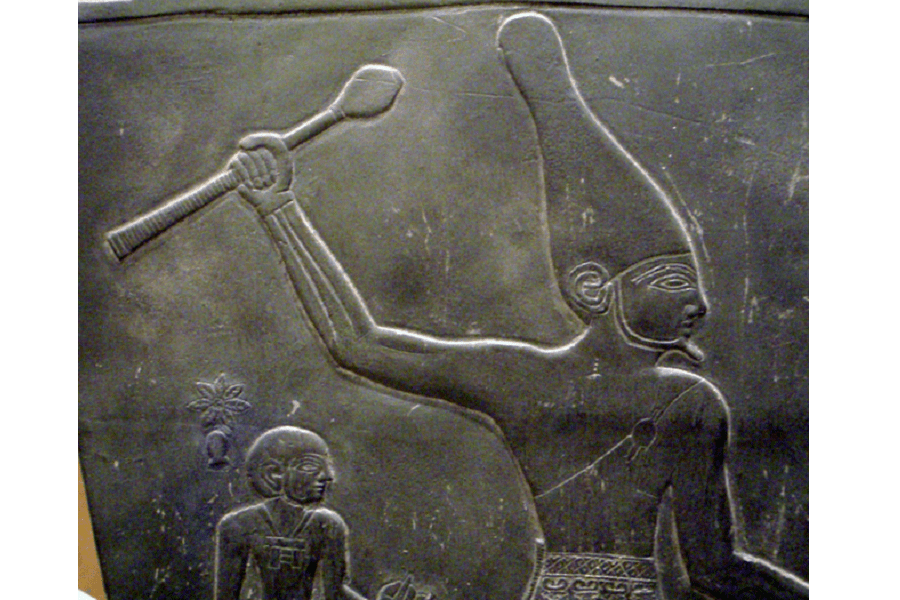
The first pharaoh of Egypt was Narmer, whose name written in hieroglyphics uses the symbol for catfish and chisel. Narmer is translated to raging or painful catfish. Narmer is a legendary figure in ancient Egyptian history, the story of how he unified Upper and Lower Egypt is fact woven with myth.
Before Narmer, Egypt was divided into two separate kingdoms, known as Upper and Lower Egypt. Upper Egypt was the territory in the South of Egypt, and Upper Egypt was in the north and contained the Nile Delta. Each kingdom was ruled separately.
Narmer and the First Dynasty
Narmer was not the first Egyptian king, but he is thought to have unified Lower and Upper Egypt through military conquest around 3100 BCE. Another name however is linked to the unification of Egypt and ushering in dynastic rule, and that is Menes.
Egyptologists believe that Menes and Narmer are the same rulers. The confusion with the names is because the ancient Egyptian kings often had two names, one was the Horus name, in honor of the ancient Egyptian god of kingship and eternal king of Egypt. The other name was their birth name.
We know Narmer unified Egypt because of inscriptions found showing the ancient king wearing the white crown of Upper Egypt and the red crown of Lower Egypt. This first Egyptian pharaoh of a unified Egypt began a new age in ancient Egypt, ushering in the first period of pharaonic dynastic rule.
According to an ancient Egyptian historian, Narmer ruled Egypt for 60 years before meeting an untimely death when he was carried off by a hippopotamus.
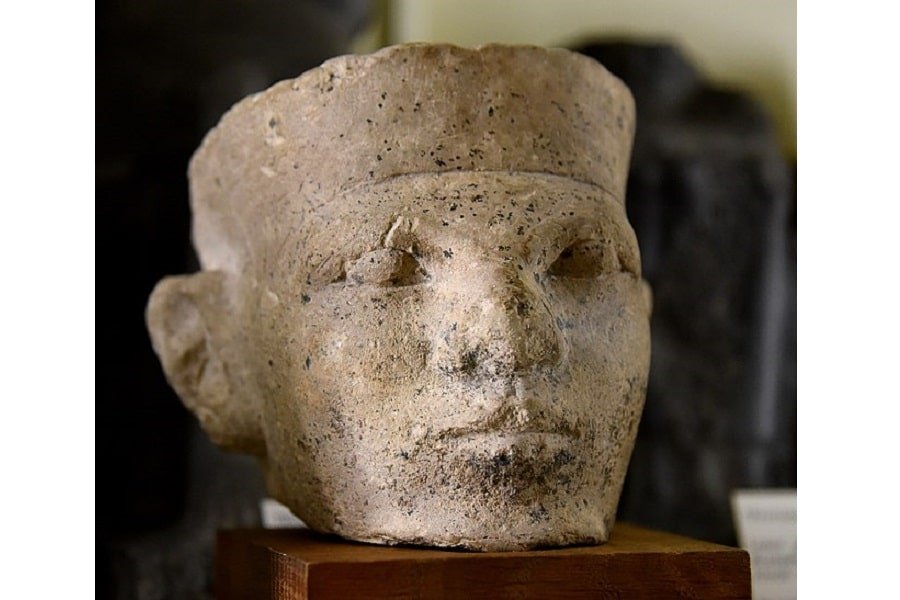
How Many Pharaohs Were There?
Ancient Egypt had roughly 170 pharaohs rule over the Egyptian empire from 3100 BCE, until 30 BCE when Egypt became part of the Roman Empire. The last pharaoh of Egypt was a female pharaoh, Cleopatra VII.
The Most Famous Pharaohs
The ancient Egyptian civilization had some of the most powerful kings (and queens) in history reign over it. Many great pharaohs ruled Egypt, each leaving their mark on the history and culture of this ancient civilization.
Although there were 170 ancient Egyptian pharaohs, not all of them are remembered equally. Some pharaohs are more famous than others. Some of the most famous pharaohs are:
The Most Famous Pharaohs of the Old Kingdom (2700 – 2200 BCE)
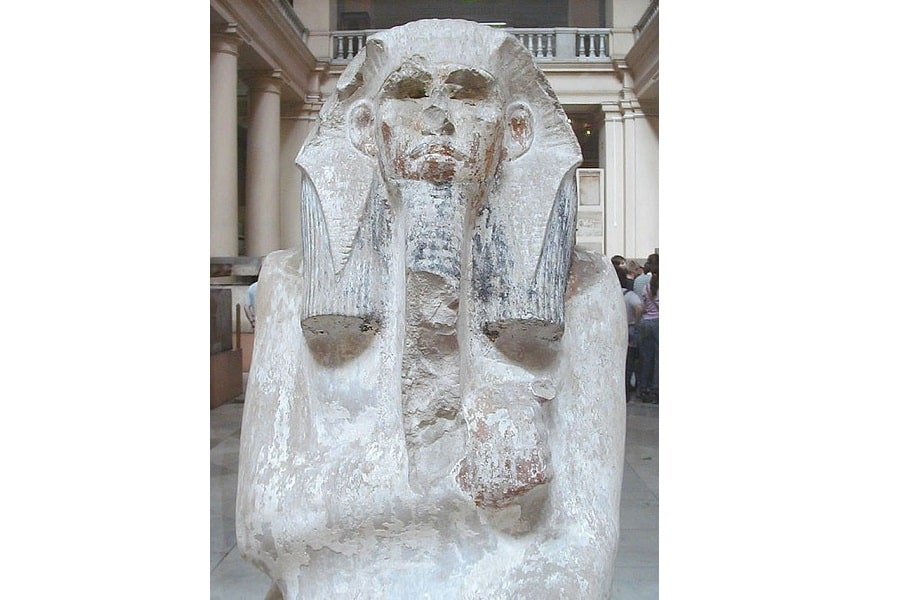
The Old Kingdom was the first period of stable rule in ancient Egypt. The kings of this time are most famed for the complex pyramids that they built, which is why this period of Egyptian history is known as the ‘age of the pyramid builders.’
Two pharaohs, in particular, are remembered for their contributions to ancient Egypt, these are Djoser, who ruled from 2686 BCE to 2649 BCE, and Khufu who was king from 2589 BCE until 2566 BCE.
Djoser ruled Egypt during the Third Dynasty of the Old Kingdom period. Not much is known about this ancient king, but his reign had a lasting effect on the cultural landscape of Egypt. Djoser was the first pharaoh to use the step pyramid design and built the pyramid at Saqqara, where he was buried.
Khufu was the second pharaoh of the Fourth Dynasty and is credited with the constriction of the Great Pyramid of Giza. Khufu built the pyramid to act as his stairway to the heavens. The pyramid was the tallest structure in the world for roughly 4,000 years!
The Most Famous Pharaohs of the Middle Kingdom (2040 – 1782 BCE)
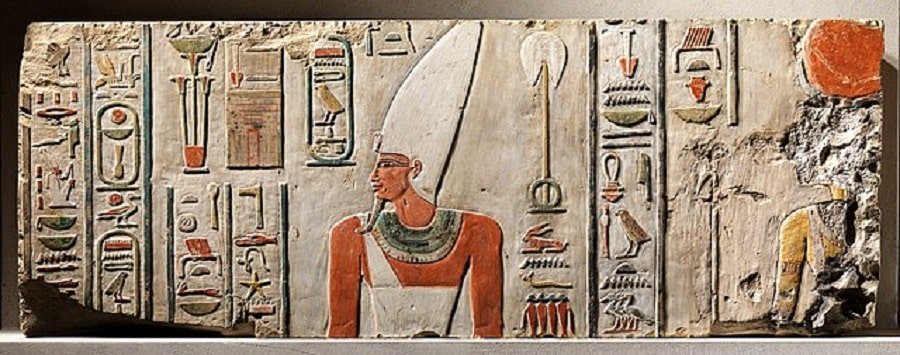
The Middle Kingdom was a period of reunification in ancient Egypt, after the politically insatiable period known as the First Intermediate Period. The kings of this period are known for their efforts in ensuring Egypt remained unified and stable after the turmoil of the previous decades.
The Middle Kingdom was founded by Mentuhotep II who ruled a reunified Egypt from Thebes. The most famous pharaoh from this period is Senusret I, who is also known as the warrior-king.
Senusret I ruled during the Twelfth Dynasty and focused on expanding the Egyptian empire. The warrior-king campaigns mostly took place in Nubia (modern-day Sudan). During his 45-year reign he built several monuments, the most famous of which is the Heliopolis Obelisk.
The Pharaohs of the New Kingdom (1570 – 1069 BCE)
Some of the most famous pharaohs are from the New Kingdom which is generally believed to be the period when the prestige of the pharaohs was at its peak. The eighteenth dynasty in particular was a period of great wealth and expansion for the Egyptian empire. The most famous pharaohs who ruled Egypt during this time are:
Thutmose III (1458 – 1425 BCE)
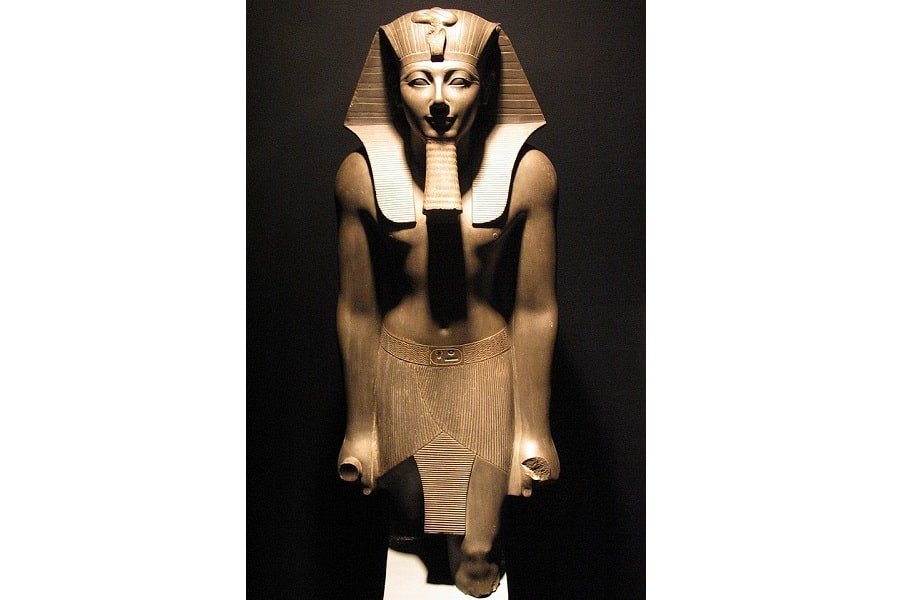
Thutmose III was just two years old when he ascended to the throne when his father, Thotmoses II died. The young king’s aunt, Hatshepsut, ruled as regent until her death when he became pharaoh. Thutmose III would go on to become one of the greatest pharaohs in the history of Egypt.
Thutmose III is regarded as Egypt’s greatest military pharaoh, conducting several successful campaigns to expand the Egyptian empire. Through his military campaigns, he made Egypt extremely wealthy.
Amenhotep III (1388 – 1351 BCE)
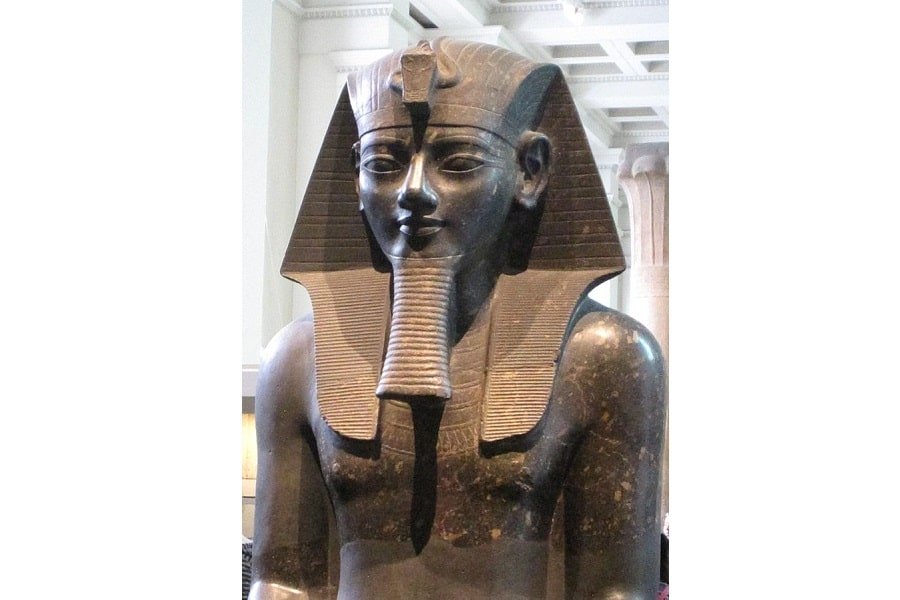
The peak of the 18th dynasty was during the rule of the ninth pharaoh to rule during the 18th dynasty, Amenhotep III. His reign is considered the peak of the dynasty because of the relative peace and prosperity experienced in Egypt for almost 50 years.
Amenhotep built several monuments, the most famed is that of the Temple of Mat at Luxor. Although Amenhotep was a great pharaoh in his own right, he is often remembered due to his famous family members; his son Akhenaten and grandson, Tutankhamun.
Akhenaten (1351 – 1334 BCE)

Akhenaten was born Amenhotep IV but changed his name to align with his religious views. Akhenaten was a rather controversial leader because he ushered in a religious revolution during his reign. He transformed the centuries-old polytheistic religion into a monotheistic one, where only the sun god Aten could be worshiped.
This pharaoh was so controversial that the ancient Egyptians tried to remove all traces of him from history.
Ramses II (1303 – 1213 BCE)

Ramses II, also known as Ramses the Great built several temples, monuments, and cities during his reign, while waging several military campaigns, earning him the title of the greatest pharaoh of the 19th dynasty.
Ramses the Great built more monuments than any other pharaoh, including Abu Simbel, and completed the Hypostyle Hall at Karnak. Ramses II also fathered 100 children, more than any other pharaoh. The 66-year-long reign of Ramses II is considered to be the most prosperous and stable in the history of Egypt.
Who is the Most Famous Pharaoh in Egypt?
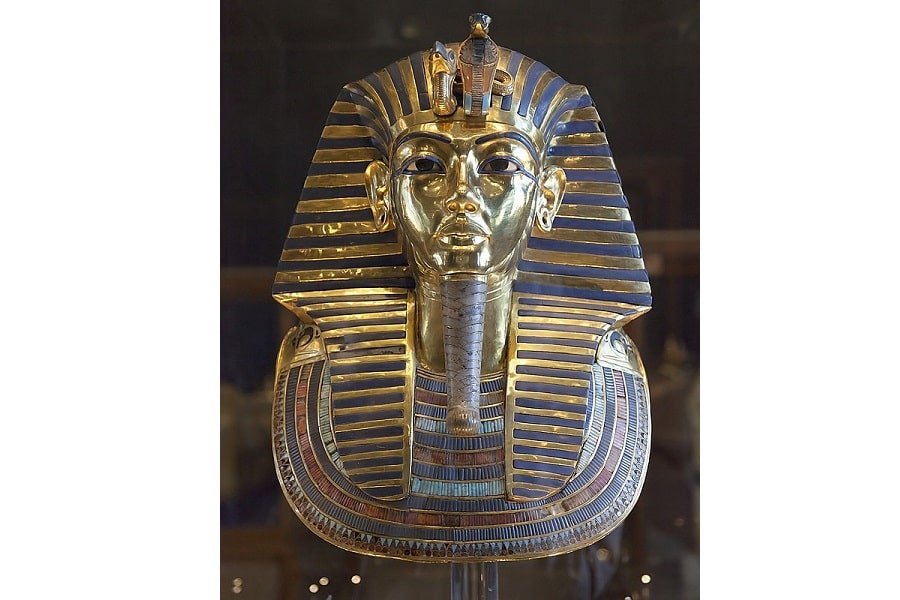
The most famous ancient Egyptian pharaoh is King Tutankhamun, whose life and afterlife are the stuff of myth and legend. His fame is partly because his tomb, found in the Valley of the Kings, was the most intact tomb ever found.
The Discovery of King Tutankhamun
King Tutankhamun or King Tut as he is widely known, ruled Egypt in the 18th dynasty during the New Kingdom. The young king ruled for ten years from 1333 until 1324 BCE. Tutankhamun was 19 years old when he died.
King Tut was largely unknown until his final resting place was unearthed in 1922 by British archaeologist Howard Carter. The tomb was untouched by grave robbers and the ravages of time. The tomb is shrouded in legend, and the belief that those who opened it were cursed (essentially, the plot to the 1999 Brendan Fraser hit, “The Mummy”).
Despite the claim that the tomb was cursed (it was checked, and no inscription was found), tragedy and misfortune struck those who opened the long-dead king’s tomb. The idea that Tutankhamun’s tomb was cursed was fueled by the death of the financial backer of the excavation, Lord Carnarvon.
The tomb of Tutankhamun was packed with over 5,000 artifacts, full of treasures and objects to accompany the young king in the afterlife, giving us our first unobstructed view of the beliefs and life of the ancient Egyptians.
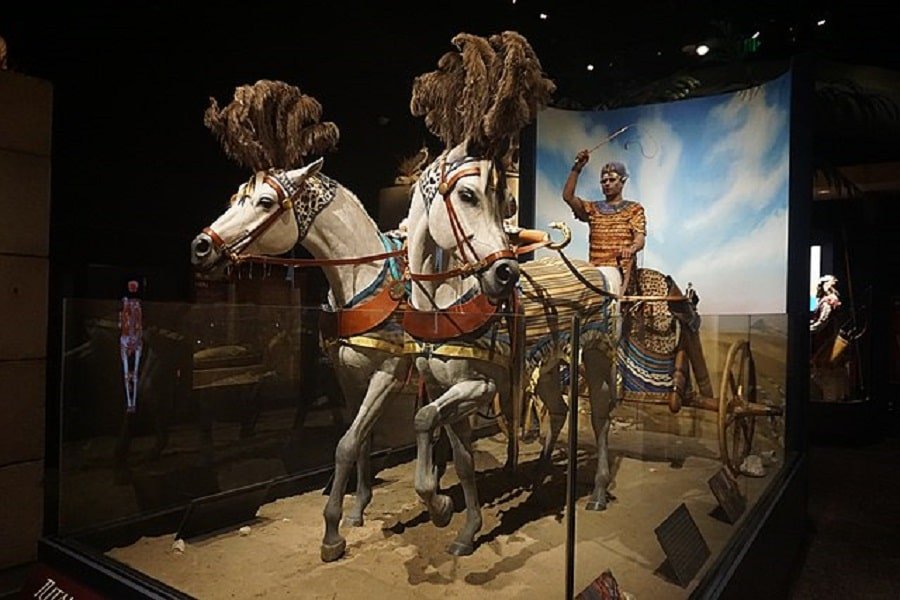
Pharaohs as Religious Leaders
The second title is that of ‘High Priest of Every Temple.’ The ancient Egyptians were a deeply religious bunch, their religion was polytheistic, meaning they worshiped many gods and goddesses. The pharaoh presided over religious ceremonies and decided where new temples would be built.
The pharaohs built great statues and monuments to the gods, and themselves to honor the land they had been given to rule by the gods.
READ MORE: 35 Ancient Egyptian Gods and Goddesses
Who Could Become Pharaoh?
The pharaohs of Egypt were usually the son of the pharaoh before. The wife of the pharaoh and mother of the future pharaohs was referred to as the Great Royal Wife.
Just because the pharaonic rule was passed from father to son, did not mean that only men ruled Egypt, many of the greatest rulers of ancient Egypt were women. However, the majority of women who ruled ancient Egypt were placeholders until the next male heir was of age to take the throne.
The ancient Egyptians believed that the gods dictated who became a pharaoh, and how a pharaoh ruled. Often a pharaoh would make his sister, or sometimes their daughter the Great Royal Wife, to ensure the divine right to rule remained in their bloodline.

The Pharaoh and the Ancient Egyptian Mythology
As is the case with many of history’s monarchies, the ancient Egyptian pharaohs came to believe that they ruled by divine right. At the onset of the first dynasty, the early Egyptian rulers believed their reign to be the will of the gods. However, it was not believed that they ruled by divine right. This changed during the second pharaonic dynasty.
During the second pharaonic dynasty (2890 – 2670) the rule of the ancient Egyptian pharaoh was not just considered to be the will of the gods. Under king Nebra or Raneb, as he was known, it was believed he ruled Egypt by divine right. The pharaoh thus became a divine being, the living representation of the gods.
The ancient Egyptian god Osiris was considered by the ancient Egyptians to be the first king of the land. Eventually, the son of Osiris, Horus, the falcon-headed god, became intrinsically linked to the kingship of Egypt.
Pharaohs and the Ma’at
It was the role of the pharaoh to maintain the ma’at, which was the concept of order and balance as determined by the gods. The ma’at would ensure that all ancient Egyptians would live in harmony, experiencing the best possible life that they could.
The ancient Egyptians believed the ma’at was presided over by the goddess Ma’at, whose will was interpreted by the ruling pharaoh. Each pharaoh interpreted the goddess’s guidelines for harmony and balance within ancient Egypt differently.
One way the ancient kings of Egypt endured balance and harmony throughout Egypt was through war. Many great wars were fought by pharaohs to restore the balance of the land. Rameses II (1279 BCE), considered by many to be the greatest pharaoh of the New Kingdom, waged war on the Hittites because they disrupted the balance.
The balance and harmony of the land could be disrupted by any manner of things, including a lack of resources. It was not uncommon for a pharaoh to attack other nations on Egypt’s borders in the name of restoring balance to the land. In actuality, the border nation often had resources Egypt either lacked, or the pharaoh wanted.
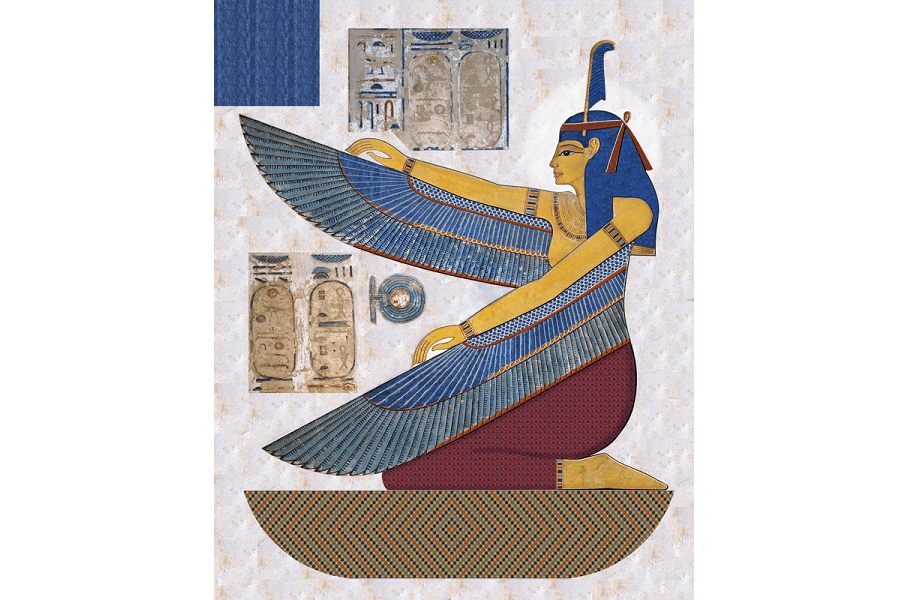
Pharaonic Symbols
To cement their connection to Osiris, ancient Egyptian rulers carried the cook and the flail. The crook and flail or heka and nekhakha, became the symbols of pharaonic power and authority. In art from ancient Egypt, the items were shown as being held across the body of the pharaoh.
The heka or shepherd’s crook represented kingship, and as such Osiris and the flail represented the fertility of the land.
In addition to the crook and flail, ancient art and inscriptions often show Egyptian queens and pharaohs holding cylindrical objects which are the Rods of Horus. The cylinders, referred to as the Cylinders of the Pharaoh, were thought to anchor the pharaoh to Horus, ensuring the pharaoh was acting upon the divine will of the gods.
What Nationality Were the Egyptian Pharaohs?
Not all of the kings to rule Egypt were Egyptian. During several periods of its 3,000-year history, Egypt was ruled by foreign empires.
When the Middle Kingdom Collapsed, Egypt was ruled by the Hyksos, an ancient Semitic-speaking group. The rulers of the 25th dynasty were Nubians. and an entire period of Egyptian history was ruled by Macedonian Greeks during the Ptolemaic Kingdom. Before the Ptolemaic Kingdom, Egypt was ruled by the Persian Empire from 525 BCE.
Pharaohs in Ancient Egyptian Art
The tales of the ancient kings of Egypt have endured throughout the millennia in part thanks to the depiction of pharaohs in ancient Egyptian art.
From tomb paintings to monumental statues and sculptures, those who ruled ancient Egypt were a popular choice for ancient artists. The pharaohs of the Middle Kingdom were particularly fond of building colossal statues of themselves.
You will find stories of ancient Egyptian kings and queens on the walls of tombs and temples. Tomb paintings in particular have provided us with a record of how the pharaohs lived and ruled. Tomb paintings often depict moments of importance from a pharaoh’s life such as battles or religious ceremonies.
One of the most common ways ancient Egyptian pharaohs were depicted was through large statues. The Egyptian rulers constructed impressive statues of themselves as a way of expressing their divine rule over the lands of Egypt that had been bestowed upon them by the gods. These statues were placed in temples or sacred sites.

What Happened When a Pharaoh Died?
Belief in the afterlife was at the center of ancient Egyptian religion. The ancient Egyptians had a complex and elaborate belief system about the afterlife. They believed in three main aspects when it came to the afterlife, the underworld, eternal life, and that the soul would be rebirthed.
The ancient Egyptians believed that when a person died (pharaoh included), their soul or ‘ka’ would leave their body and embark on a difficult journey to the afterlife. Much of an ancient Egyptian’s time on earth was ensuring they would experience a good afterlife.
When one of the ancient Egyptian rulers died, they were mummified and placed in a beautiful gold sarcophagus which would then be put into the final resting place of the pharaoh. The royal family would be entombed in a similar manner close to the pharaoh’s final resetting place.
For those who ruled during the Old and Middle Kingdoms, this meant being entombed in a Pyramid, while the Photographs of the New Kingdom preferred to be placed in crypts in the Valley of the Kings.
Pharaohs and the Pyramids
Beginning with ancient Egypt’s third king, Djoser, ( 2650 BCE), the kings of Egypt, their queens, and the royal family were entombed in great pyramids.
The enormous tombs were designed to keep the pharaoh’s body safe and ensure he (or she) entered the underworld or Duat, which could only be entered through the deceased person’s tomb.
The pyramids were referred to as ‘houses of eternity’ by the ancient Egyptians. The pyramids were designed to house everything the pharaoh’s ‘ka’ might need on his journey to the afterlife.
READ MORE: 10 Gods of Death and the Underworld From Around the World
The body of the pharaoh was surrounded by astounding ancient Egyptian art and artifacts, and the walls of the pyramids are filled with stories of the pharaohs entombed there. The tomb of Ramses II included a library that contained over 10,000 papyrus scrolls,
The largest pyramid to be built was the Great Pyramid of Giza. One of the 7 wonders of the ancient world. The pyramids of the ancient Egyptian pharaohs are an enduring symbol of the power of the pharaoh.